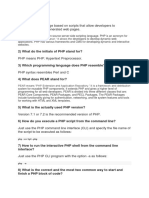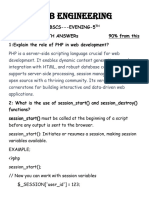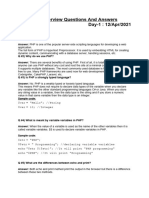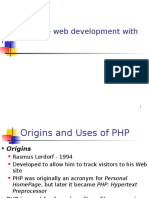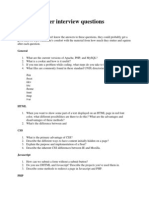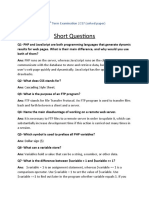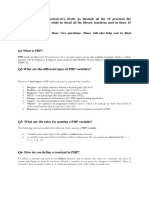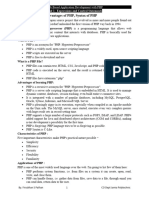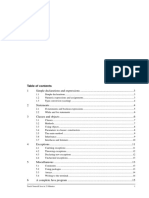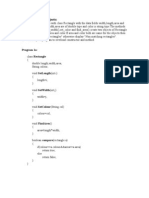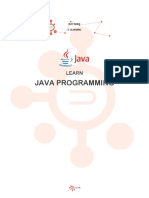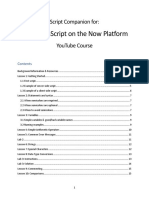0% found this document useful (0 votes)
47 views21 pagesPHP Unit 1 Solved
The document provides a comprehensive overview of PHP and MySQL, covering fundamental concepts, features, and examples of PHP code. It includes topics such as data types, variable scope, operators, and installation instructions for PHP on Windows. Additionally, it explains how to embed PHP in HTML and discusses garbage collection in PHP.
Uploaded by
sharankumar26341Copyright
© © All Rights Reserved
We take content rights seriously. If you suspect this is your content, claim it here.
Available Formats
Download as PDF, TXT or read online on Scribd
0% found this document useful (0 votes)
47 views21 pagesPHP Unit 1 Solved
The document provides a comprehensive overview of PHP and MySQL, covering fundamental concepts, features, and examples of PHP code. It includes topics such as data types, variable scope, operators, and installation instructions for PHP on Windows. Additionally, it explains how to embed PHP in HTML and discusses garbage collection in PHP.
Uploaded by
sharankumar26341Copyright
© © All Rights Reserved
We take content rights seriously. If you suspect this is your content, claim it here.
Available Formats
Download as PDF, TXT or read online on Scribd
/ 21


